\\\ Ken Hamm's Stage DI ///
Ken Hamm approached me with the idea of housing his stage rig into a simple package. The aim was to combine high audio performance with functional simplicity and road reliability.
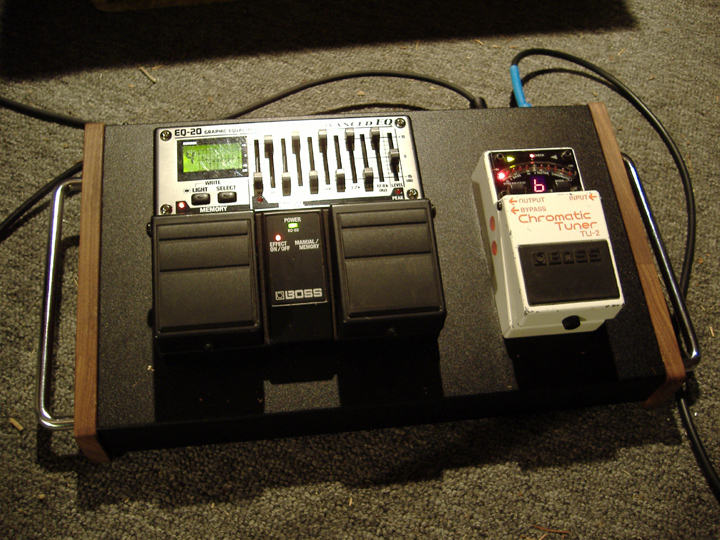 |
Ken plays a variety of acoustic instruments - from his Martin OOO-18, to National Steel Guitars, Banjos, Mandolins and more. Over the years he's zero'd in on a few tools that satisfy his stage needs - a Boss TU-2 Tuner, a programable/digital Boss EQ-20 Equalizer and a tube DI circuit.
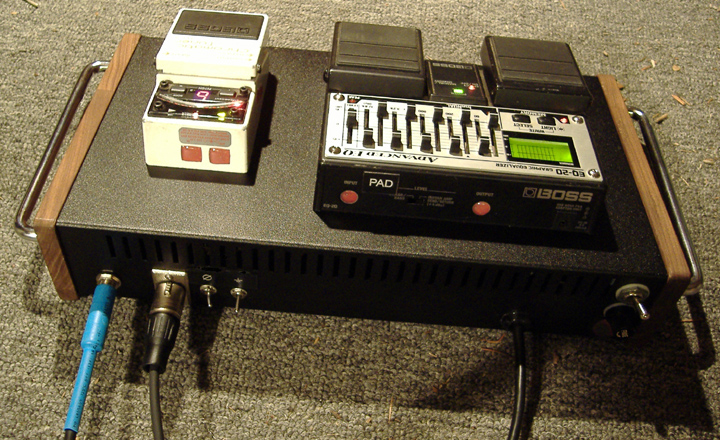 |
The TU-2 tuner gives Ken the option of killing his signal when swapping instruments. The EQ-20's storing function allows Ken to preset the equalization to match each instrument's response to the requirements of the venue. This is done before hand with the sound engineer so during the performance Ken can swap his instruments at will and choose the appropriate setting on his EQ pedal - avoiding endless problems at the sound board. All switching and mute functions occur seamlessly without any pops or clicks feeding into the output.
Boss TU-2 and EQ-20 Pedal Modifications
All audio wiring is done from the inside of the Hammond box - jacks on the pedals become useless and are removed, holes plugged.
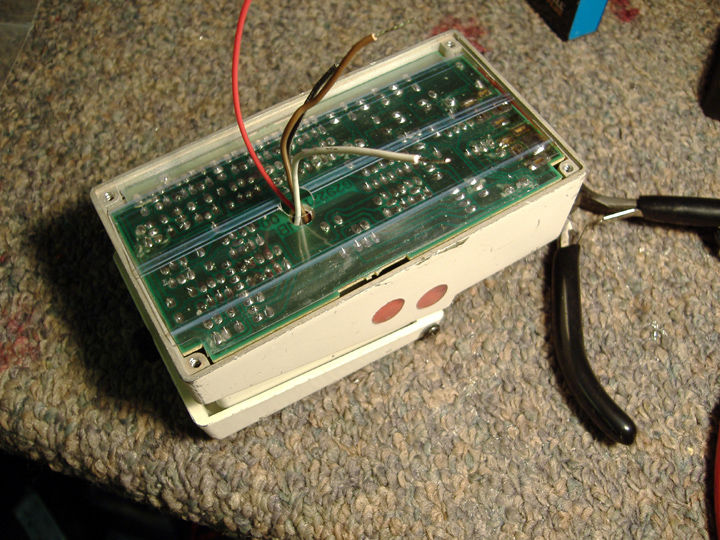 |
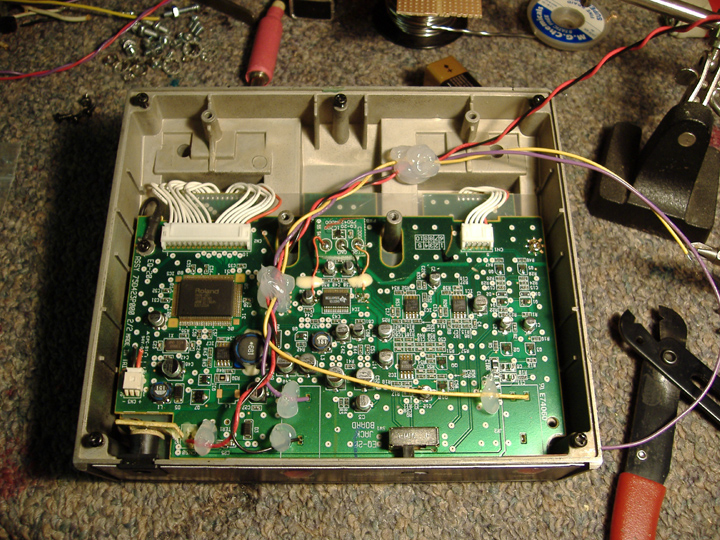 |
On the EQ-20 the "effect bypass" trace is cut and the "swap" switch is bridged with the bypass pedal switch to make setting swaps foot selectable, instead of bypassing which is useless here.
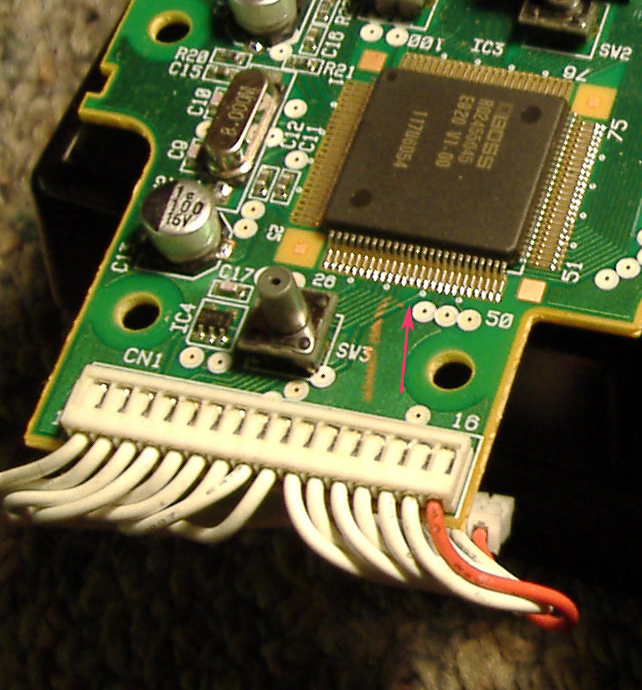 |
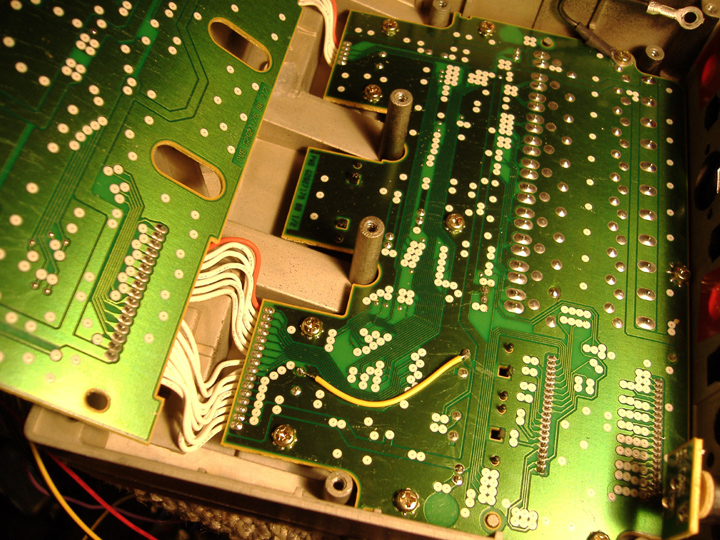 |
Balanced Tube DI circuit
The DI circuitry is mounted directly under the tuner pedal area. The double-shielded Jensen transformer is fully isolated from the metal surface using a Teflon screw. Besides providing basic DI functions the tube DI circuit smoothes out the response of the Piezo and Digital EQ.
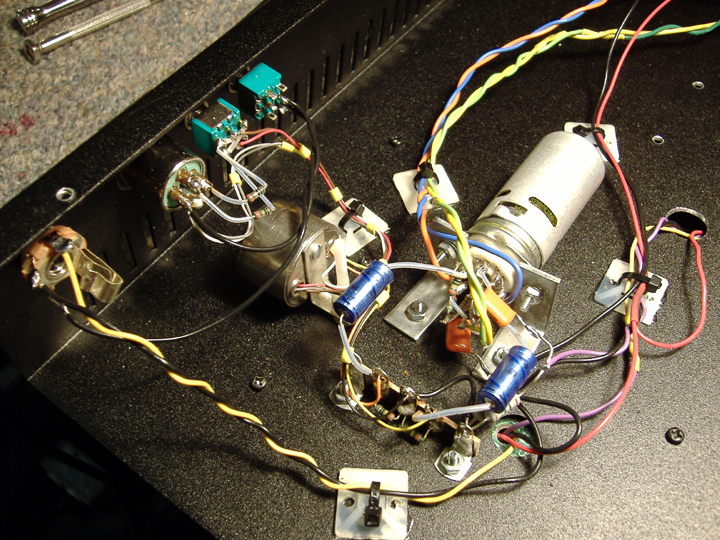 |
The Ground Lift switch disconnects the center-tap of the DI output winding to chassis ground, in usual fashion. Padding is provided via the EQ-20 and the Phase Reversal switch inverts the order at the input of the Jensen transformer.
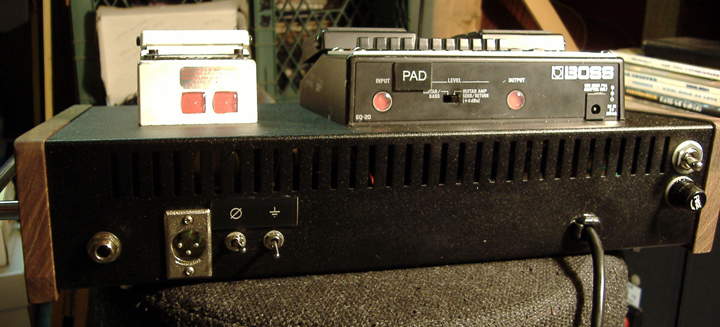 |
Along with 24 feet of AC an external power switch and fuse holder are provided at the back of the unit. The piezo pickup goes straight into the unit via a chassis-isolated jack, and a balanced microphone cable sends the output to the sound board.
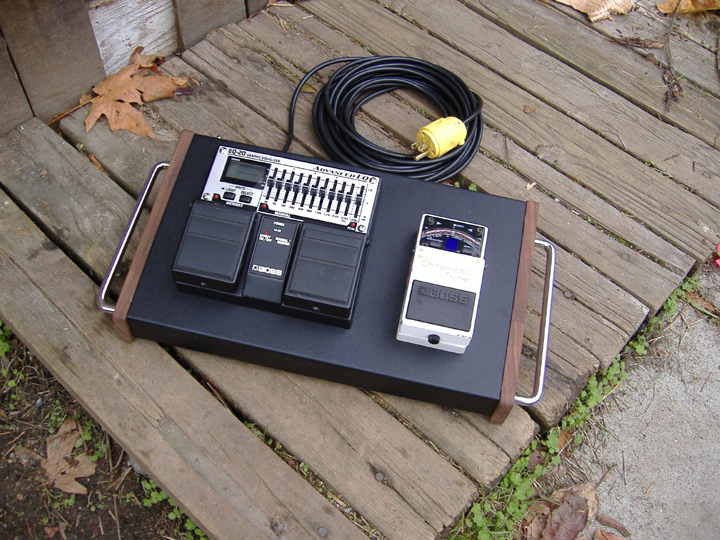 |
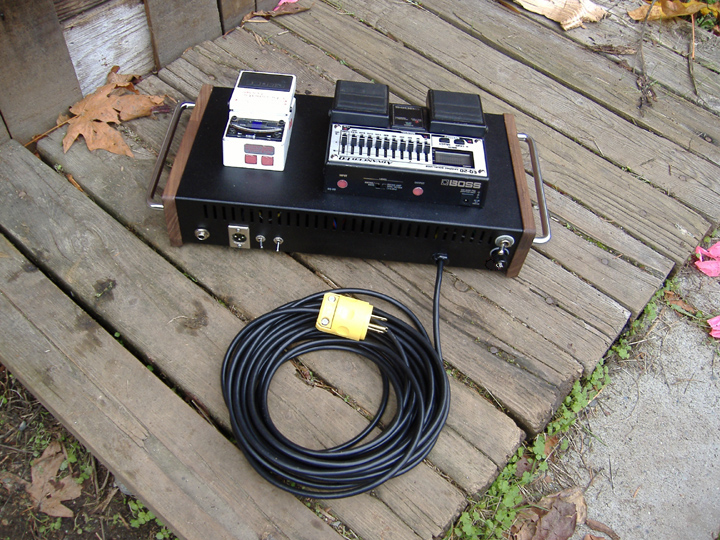 |
viva Analog /// jc -> lynx.net